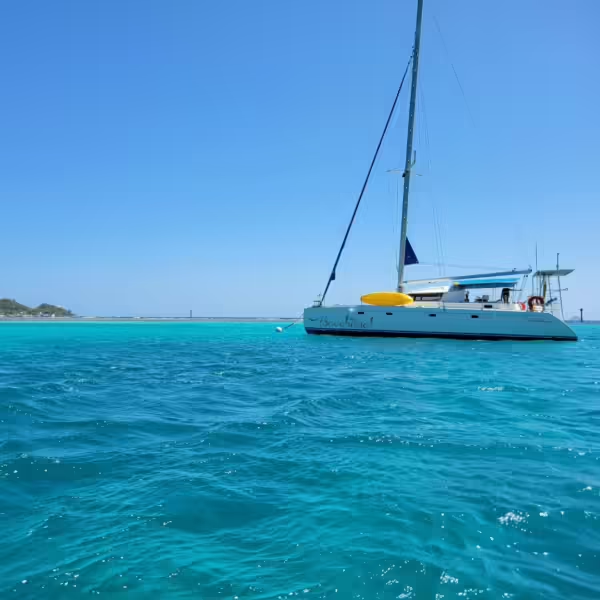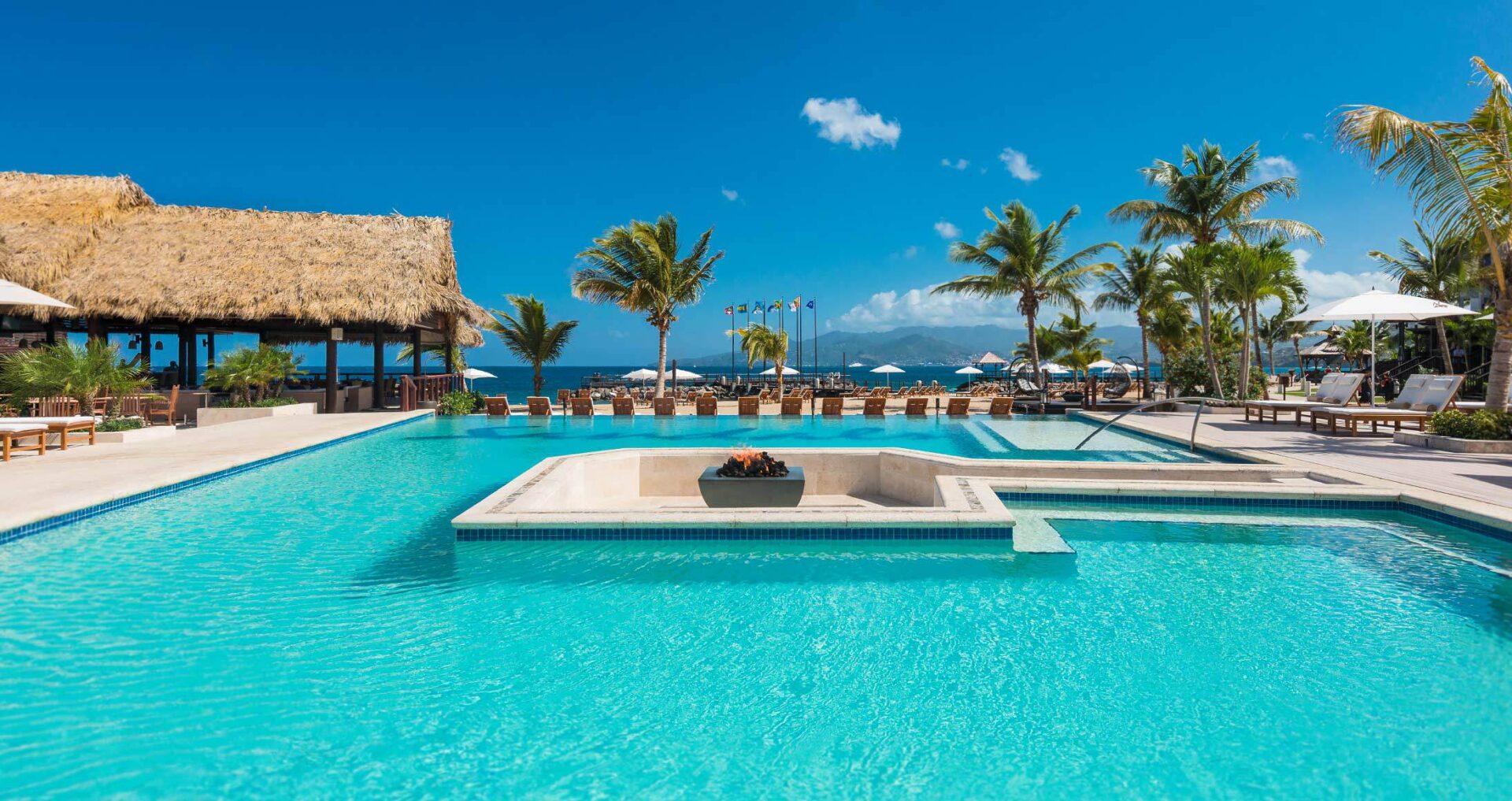
Experience the Undiscovered Caribean Island of Carriacou
A trip to Grenada is never complete without a trip to Carriacou. This island’s charm is its laidback rejuvenating respite from the fast-paced world and the deeply rooted traditions that are cherished by its citizens. Carriacou (Karry-a-cou) which means “Isle of Reefs” is just 90 minutes by ferry or 20 minutes by plane from the mainland Grenada.
It is the destination’s second-largest island, measuring just 13 square miles, with a population of around 9,000. The tiny island is an excellent dive and snorkel destination with clear water, pristine coral reefs, and magical drifts. Cariacou is also the largest and last island in the spectacular sailing paradise of the Grenadines island chain.
The History of Carriacou
The earliest written records dating back to 1656, suggest that the Kalinago (Caribs) named Carriacou ‘Kayryouacou’ – meaning ‘land surrounded by reefs. Discoveries of pottery tools reveal that Arawaks from South America were the first settlers on the island, followed by various waves and ending with the Kalinago.
The French were the first European settlers in Carriacou around the 1740s. In 1763, it was surrendered along with Grenada to the British. Although the majority of Carriacou’s inhabitants are of African descent, European influences can still be found in the way Kayaks live and also in the names of our towns, cities and people.
On the shores of Carriacou, you will see rows of locally built boats, from small fishing sloops to large trading schooners. The village of Windward was home to a group of Scottish boat builders who settled in Carriacou during the 19th century and passed on their practices, which are still used in boat building today. You can still witness boats being built in the traditional way on the beaches of Carriacou.
Kayaks today earn their living through rearing their own livestock, farming, growing corn and mainly fishing. Previously, they produced their own cotton, indigo, sugar, limes, coffee and cocoa.
The Rich and Unique Culture of Carriacou
Carriacou boasts a dynamic culture, steeped in ancestral traditions – all of which reflect the rich African and Scottish ancestry of its inhabitants. Even today, African big drum nation dance and European quadrille are common staples at celebrations and festivals.
Carriacou’s Tombstone Feast
The Tombstone Feast, known to our people as ‘Saraca’ is celebrated in Carriacou. When someone dies, young men go out on donkeys chanting ‘Sake tan pale lot, who hear tell the others Mr. so-and-so dead. At the wake, which can be up to 7 days before the burial, hymns are sung and bush tea is served to mourners.
The term ‘Happy Hour’ is now more commonly used, and alcoholic and canned beverages are served instead.
A stone feast occurs three years after someone has died with a tombstone bearing information of the deceased’s name, date of birth and death. It is then installed when relatives travel from overseas to be part of the Saraca feast.
A Celebration of Africa
The people of Carriacou celebrate the African tribes they believe to have originated from through music and dance. The names of these tribes are Ibo, Congo, Temne, Mandinka, Chamba and Kromati.
Carriacou’s Big Drum Dance
The ‘Big Drum Dance’ or ‘Nation Dance’ of Carriacou is widely celebrated alongside other performances known as the Kalenda, Juba, Belair, Granbelair, Hallecud and Bongo, which are danced at weddings, boat launchings, tombstone feasts and maroons.
The three symbolic drums are made from small wooden rum kegs painted red, with a drum surface made from goatskin. The treble drum, which is the largest, is placed in the centre, with small bass drums on each side. These are all played with open palms while women shake Shac Shacs (organic instrument) and sing. People are encouraged to sing along and dance to the rhythmic sounds of the drum.
The Quadrille Dance
The Quadrille Dance, which originates from France, is usually performed in the village of L’Esterre and is the second most popular dance in Carriacou.
The Maroon Festival
The Maroon Festival is an important aspect of life in Carriacou. During a ‘maroon’ villagers come together and cook traditional foods and partake in the big ‘Big Drum Dance’. The annual Maroon and String Band Music Festival is a three-day event of activities that showcase a display of local food, crafts, music and dance. The entire island comes together to make it a fun-filled event and it is deemed a major visitor attraction.
Carriacou Carnival
Carnival in Carriacou is still very traditional. On the eve of Carnival Tuesday, revellers partake in a traditional mas called ‘Pierrot’, known as ‘ShortKnee’ in Grenada. It is a masquerade that mimics the customs of plantation owners. Revellers dressed in brightly-coloured clothing, white facemasks and knee-length socks have face-offs by reciting passages from Shakespeare. Each reveller carries a bullwhip and if the passages are recited incorrectly, it results in a strike with the bullwhip.
The “Kayaks” of Carriacou
Kayaks have rich traditions and customs passed through generations influenced by their African and European ancestors. There are so many cultural experiences to take in and memorable celebrations, be it as a witness to a traditional wedding or boat-launching event, watching the Big Drum Nation Dance or Shakespeare Mas, or taking part in All Saints Candle Lighting ‘Pass Play’ and Fishermen’s Birthday Celebrations.
For centuries, ‘Kayaks’, as they are commonly called, have passed down the boatbuilding traditions of their Scottish forefathers. Today, large sloops and schooners are still being built in the traditional methods once plied by ancestors in the village of Windward. These boats are the feature of the island’s premier Regatta Festival (August), the longest-running in the Caribbean. The island boasts a slew of other historic traditions, such as Saraca, Tombstone Feasts, Parang Festival, Maroon & String Band Music Festival, and Shakespeare Mas, which is the re-enactment of plays by William Shakespeare during Carriacou’s pre-Lenten Carnival celebrations.
The Unique Boat-Building Heritage of Carriacou
In the village of Windward, sailing boats were built using traditional methods passed down by Scottish settlers in Carriacou. A number of initiatives have been put in place to encourage young people to learn the art of boat building by producing model boats, and the excitement of boat building is kept alive through the annual Carriacou Regatta held in the month of August.
Boat building and boat launching is a tradition taken very seriously in Carriacou. At boat launching events, goats and sheep are sacrificed. Their blood and holy water are sprinkled onto the boats and a priest blesses it in a naming ceremony. Children chosen to be Godchildren of the boat are dressed in bright colors and line the deck. After the ceremony, the shoals are cut down and everyone pulls the ropes to launch the boat into the sea.
Cake And Flag Dancing
Approximately 2 months before a traditional Carriacou wedding, a flag is flown on the roofs of both the bride and groom’s parent’s houses. The flags usually have messages such as one love, peace and love. The flying of the flags usually coincides with the announcement of the first wedding banns. To signify the joining of the families, the flags are removed from the roofs of the houses and the two families then process towards a meeting point close to the bride’s home where the flag dance takes place. The bride’s dancer must eventually submit to the groom’s dancer (i.e. the groom’s flag must end on top of the bride’s flag). A cake dance follows the flag dance and similarly, the bride’s dancer must submit to the groom’s dancer. Both flags are then flown on the roof of the bride’s parent’s house with the groom’s flag at the top. After the church ceremony, a reception is held at the bride’s parents’ house followed by a Big Drum dance.
Parent Plate
Choice cuts of meat are cooked without any salt or garlic and a special table with a variety of foods, fruits, cakes and drinks is set for the dead relatives of the family. This tradition pays tribute to past relatives.
Wetting of the Ground
The ritual of Ground Wetting and prayers are usually conducted before the slaughtering of animals, which are offered as a sacrifice for God’s blessings to be bestowed on an event or union. It usually includes a prayer procession around the house and the wetting is done at all corners of the house. The drinks used for the Ground Wetting ritual include strong rum, brandy, whisky, plain water, sweet water, and a variety of pop and juices.
Getting To Carriacou
There are regular weekly flights from North America and Europe to Grenada’s Maurice Bishop International Airport (MBIA). The journey to Carriacou is a short twenty minute ride by air or two hours by sea. Whichever option you choose you are sure to have an exciting trip filled with breathtaking views of our islands.
Travelling By Air
St. Vincent Grenadines Air (SVG Air) operates five flights a week between Grenada’s Maurice Bishop International Airport and Carriacou’s Lauriston Airport. The flight is 20 minutes. It is easy for visitors and business travellers to spend at least one day exploring Carriacou.
Ticket prices and schedules are subject to change so please contact SVG Air for more information – St. Vincent Grenadines (SVG) Air: Tel: 473 444-1475 | www.svgair.com
TRAVELLING BY SEA
For visitors already in Grenada the Osprey Ferry operates three days a week round-trip service between Grenada, Carriacou and Petite Martinique. The 90-minute journey on a power-catamaran travels along Grenada’s scenic west coast from St. George’s, passing the small islets between Grenada and Carriacou and arriving in Hillsborough, before going onto Petite Martinique.
For a day trip to Carriacou passengers should get to the Queen’s Jetty on the Carenage (opposite the Fire Station) by 08:30 to purchase tickets from the Osprey’s ticket counter. In Carriacou tickets can be purchased from the Osprey’s office on Main Street, Hillsborough. Tickets cost EC $80 one-way or EC $160 return per person.
Upcoming Events
Promotional offers


Silversands Promotional Offer (Stay an Extra Night On Us)
Book 3 nights and your 4th night is complimentary. Discover more of Grenada’s beauty with an extra day on us. Explore lush rainforests, dive into crystal-clear waters, or unwind at





